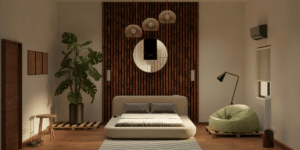Green buildings are designed with energy efficiency and sustainability in mind, leading to significant cost savings over time. One of the primary ways green buildings save money is through reduced energy consumption. These buildings utilize advanced insulation, energy-efficient windows, and state-of-the-art heating and cooling systems that minimize energy use. Solar panels and renewable energy sources are often integrated, reducing reliance on traditional energy and lowering utility bills. Over time, the savings on energy costs can be substantial, making green buildings a smart financial investment.
Another area where green buildings save costs is water efficiency. These buildings incorporate water-saving fixtures such as low-flow toilets and faucets, as well as rainwater harvesting systems that reduce water consumption. By using less water, occupants of green buildings can enjoy lower water bills. Additionally, many green buildings use sustainable landscaping practices that require less irrigation, further contributing to water savings.
Maintenance costs are also lower in green buildings. Sustainable materials and construction practices ensure that green buildings are durable and require less frequent repairs. For instance, using high-quality, long-lasting materials means fewer replacements and less maintenance over time. These savings add up, reducing the overall cost of building ownership and operation.
What Are the Health Benefits of Green Buildings?
Green buildings offer numerous health benefits for occupants, contributing to improved well-being and productivity. One key health advantage is better indoor air quality. Green buildings use non-toxic, low-emission materials that reduce the presence of harmful chemicals and pollutants indoors. Improved ventilation systems ensure a constant flow of fresh air, reducing the concentration of indoor pollutants and allergens. This leads to a healthier indoor environment, reducing respiratory issues and other health problems associated with poor air quality.
Natural lighting is another health benefit of green buildings. By maximizing the use of natural light through well-placed windows and skylights, green buildings reduce the need for artificial lighting. Exposure to natural light has been shown to improve mood, reduce stress, and enhance productivity. It also helps regulate the body’s natural sleep-wake cycle, improving sleep quality and overall health.
Green buildings often include features that encourage physical activity and well-being. Access to green spaces, such as gardens and rooftop terraces, provides opportunities for exercise and relaxation. These spaces not only offer a place to unwind but also promote mental health by providing a connection to nature. Some green buildings also include amenities like fitness centers and bike storage, encouraging occupants to lead active lifestyles.
How Do Green Buildings Impact the Environment?
The environmental impact of green buildings is profound. They contribute to sustainability and reduce our carbon footprint. One of the most significant environmental benefits is the reduction of greenhouse gas emissions. Green buildings use less energy from non-renewable sources, which means fewer emissions from power plants. By integrating renewable energy technologies, such as solar or wind power, green buildings further decrease reliance on fossil fuels, leading to a cleaner environment.
Green buildings also focus on sustainable resource use. During construction, sustainable practices minimize waste and prioritize using recycled and locally sourced materials. This reduces the environmental impact associated with material production and transportation. Additionally, green buildings often incorporate green roofs and walls, which provide insulation, reduce heat islands in urban areas, and support biodiversity by creating habitats for plants and animals.
Water conservation is another crucial environmental benefit of green buildings. By implementing efficient water management systems, green buildings reduce water consumption and lower the strain on local water supplies. Rainwater harvesting and greywater recycling systems help to use water resources more efficiently, reducing runoff and preserving freshwater ecosystems.
The benefits of green buildings extend far beyond cost savings. They offer substantial health benefits by improving indoor air quality and providing natural light, which enhances the well-being of occupants. Environmentally, green buildings are critical in reducing greenhouse gas emissions, conserving resources, and promoting sustainable practices. As awareness of these benefits grows, the demand for green buildings will likely increase, driving a more sustainable and healthy future for everyone.













